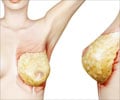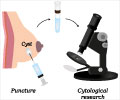
Flap Weight and Blood Supply Predict Fat Necrosis Risk
The researchers analyzed risk factors for fat necrosis in 123 women undergoing breast reconstruction after mastectomy for breast cancer. Fat necrosis refers to the death of fat cells in the reconstructed breast; it is caused by problems with blood supply to the transplanted flap.
The reconstructions were performed using the women's own tissues—specifically, using flaps of tissue transferred from the abdominal area. In performing autologous reconstructions, plastic and reconstructive surgeons create custom-designed flaps of muscle, fat and skin from the abdominal area, along with their supplying blood vessels.
Dr. Sacks and coauthors evaluated surgical and patient-related factors affecting the risk of fat necrosis after reconstruction—including the total weight of the abdominal tissue flap before it was transferred to the chest. The analysis included a total of 179 flaps (including 56 women undergoing reconstruction of both breasts).
Fat necrosis occurred in 7.5 percent of flaps overall. The risk was significantly higher for women with heavier tissue flaps: for each 100-gram increase in flap weight, the risk of fat necrosis increased by 50 percent. (The average flap weight was approximately 650 grams.)
Advertisement
Attention to Risk Factors May Improve Breast Reconstruction Outcomes
Advertisement
Fat necrosis is an important complication after breast reconstruction. "Development of fat necrosis requiring reoperation can result in significant aesthetic deformity as well as emotional and financial costs," Dr. Sacks and coauthors note.
Plastic and reconstructive surgeons are constantly working to refine the technical aspects of breast reconstruction, including flap design, in order to provide the best possible surgical and aesthetic results. Although other studies have looked at risk factors for fat necrosis, the new study is the first to focus on the flap weight and its interaction with blood supply.
The results show that larger, heavier flaps are at higher risk of fat necrosis, particularly in flaps with just one perforating blood vessel. Dr. Sacks and colleague suggest that plastic and reconstructive surgeons should consider "balancing perforator number and increasing flap weight" in designing abdominal flaps for autologous breast reconstruction. They suggest to ensure adequate blood supply to flaps in African American women, who appear to be at higher risk of fat necrosis after breast reconstruction.
Source-Eurekalert













